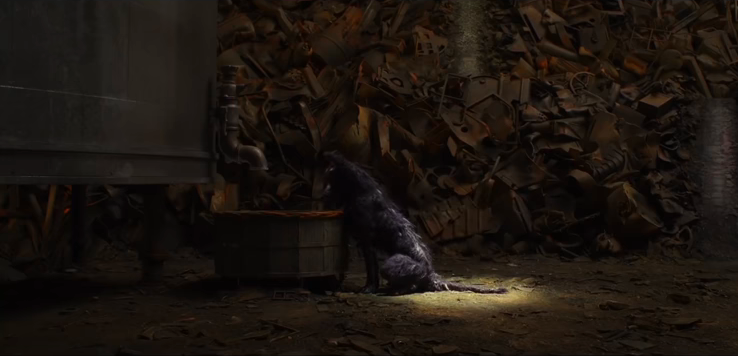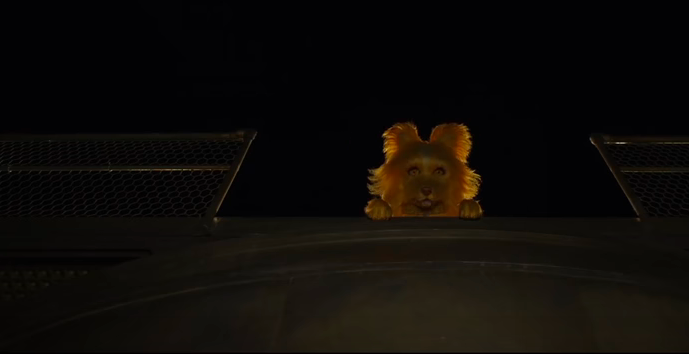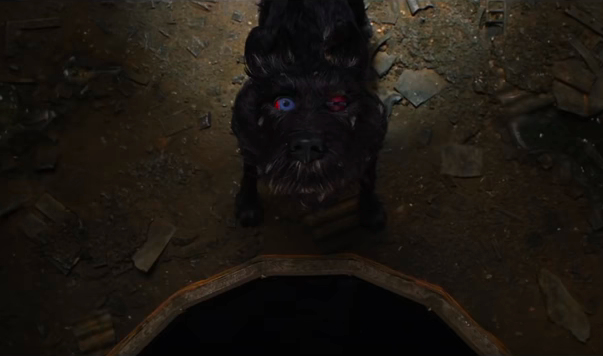Wes Anderson’s 2018 film Isle of Dogs depicts a dual representation of animals. The film’s plot is largely focused on the escapades of dogs, and for the most part these animals are highly anthropomorphised by Anderson’s direction. On the other hand, the majority of the humour in the film is constructed by Anderson occasionally reversing such anthropomorphism. Many scenes present the dogs to such a humanlike degree that we begin to relate to them, and then out of the blue Anderson will remind us of their animalistic nature and the separation between them and us as humans. In particular, the scene in which Chief first meets Nutmeg exemplifies this technique. The scene mirrors many key features of a typical ‘meet-cute’ between a heterosexual couple in romantic comedies. However, the scene then creates wacky humour in a subversive way by reminding us that we are watching dogs, and not humans. This is particularly salient in the moment Nutmeg shows Chief one of the tricks she learnt as a show dog.

Initially, the scene seems to present a binary view of dogs based on human-enforced stereotypes. Chief represents the wild, dirty, stray dog, whilst at the other end of the spectrum, Nutmeg is the well-groomed, well-trained ex-show dog. The encounter between the two dogs here reflects a common trope in rom-coms in which a heterosexual couple succeed despite class differences. This sense of social disparity is enhanced by the literal positioning of the dogs in the scene: Chief is below Nutmeg and cloaked in darkness, whilst Nutmeg is high up and illuminated. This whole scene seems to be parodying a typical rom-com ‘meet-cute’. By using common tropes of a popular film genre, Anderson anthropomorphises the dogs, thus making them relatable to us as humans.

This anthropomorphism is continued in the scene through the discussion of Nutmeg’s alleged sexual relationship with Felix. Chief refers to Nutmeg as ‘Felix’s mate’, reflecting a very human idea of gender hierarchy and patriarchy, in which the female is the property of the male. However, humour is constructed here through the use of the word ‘mate’, a word distinctively used to describe animals, which reminds us that we are not actually dealing with humanshere. This constant alternation between anthropomorphism and its reversal forces us to challenge the divide between humanised and purely animal, through the blurring of these binaries. As Wells writes, ‘the animal/human divide and the nature/culture divide are key thematic aspects of cartoon narratives.’[1] In Isle of Dogs, Anderson explores this animal/human divide by using humour to satirically question the essentiality of each category.

It is the tension between Anderson’s presentation of the dogs as both humanlike and animalistic that defines the portrayal of animals in Isle of Dogs. This constant juxtaposition is where the most humour is found throughout the film, so through comedy Anderson propositions a critical challenge of essentialist ideas around species.
[1] Paul Wells, The Animated Bestiary: Animals, Cartoons, and Culture (New Brunswick, N.J.: Rutgers University Press, 2009), p.27